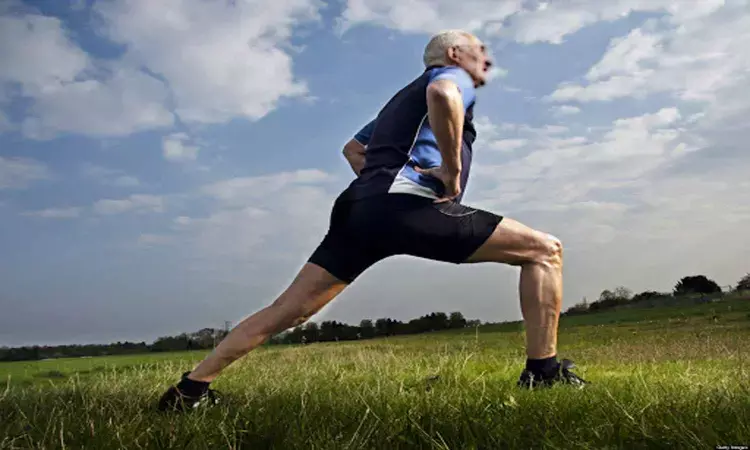- Home
- Medical news & Guidelines
- Anesthesiology
- Cardiology and CTVS
- Critical Care
- Dentistry
- Dermatology
- Diabetes and Endocrinology
- ENT
- Gastroenterology
- Medicine
- Nephrology
- Neurology
- Obstretics-Gynaecology
- Oncology
- Ophthalmology
- Orthopaedics
- Pediatrics-Neonatology
- Psychiatry
- Pulmonology
- Radiology
- Surgery
- Urology
- Laboratory Medicine
- Diet
- Nursing
- Paramedical
- Physiotherapy
- Health news
- Fact Check
- Bone Health Fact Check
- Brain Health Fact Check
- Cancer Related Fact Check
- Child Care Fact Check
- Dental and oral health fact check
- Diabetes and metabolic health fact check
- Diet and Nutrition Fact Check
- Eye and ENT Care Fact Check
- Fitness fact check
- Gut health fact check
- Heart health fact check
- Kidney health fact check
- Medical education fact check
- Men's health fact check
- Respiratory fact check
- Skin and hair care fact check
- Vaccine and Immunization fact check
- Women's health fact check
- AYUSH
- State News
- Andaman and Nicobar Islands
- Andhra Pradesh
- Arunachal Pradesh
- Assam
- Bihar
- Chandigarh
- Chattisgarh
- Dadra and Nagar Haveli
- Daman and Diu
- Delhi
- Goa
- Gujarat
- Haryana
- Himachal Pradesh
- Jammu & Kashmir
- Jharkhand
- Karnataka
- Kerala
- Ladakh
- Lakshadweep
- Madhya Pradesh
- Maharashtra
- Manipur
- Meghalaya
- Mizoram
- Nagaland
- Odisha
- Puducherry
- Punjab
- Rajasthan
- Sikkim
- Tamil Nadu
- Telangana
- Tripura
- Uttar Pradesh
- Uttrakhand
- West Bengal
- Medical Education
- Industry
High body fat level may hinder exercise capacity in diabetes patients: Study

Diabetes mellitus is associated with increased cardiovascular disease (CVD) related morbidity, mortality and death. Exercise capacity in persons with type 2 diabetes has been shown to be predictive of cardiovascular events. In
Researchers have found in a new study that People with Type 2 diabetes and higher levels of body fat may have reduced exercise capacity. The research has been published in the journal PLOS ONE.
Percentage of body fat was a significantly more important predictor of exercise capacity -- heart and lung endurance and overall physical fitness -- than other measurements, the data showed.
Therefore recognition of body fat percentage as an important marker in determining CVD risk has prognostic implications with respect to cardiovascular morbidity and mortality.
The condition also had more of an impact on exercise capacity than more traditional barometers, including blood pressure, weight, cholesterol levels and HbA1C, or blood sugar, the researchers said.
"Body composition and fat distribution have vital implications concerning physical fitness in diabetes," study co-author Dr. Prasanna Santhanam told UPI in an email.
"Increasing muscle mass and reducing body fat may increase physical fitness in diabetes, although more long term studies are needed in this regard," said Santhanam, an assistant professor of endocrinology, metabolism and diabetes at Johns Hopkins University School of Medicine in Baltimore.
An estimated 30 million people in the United States have Type 2 diabetes, which places them at increased risk for heart disease and other health complications, according to the American Diabetes Association.
Exercise is considered crucial for people with the disease to minimize their risk for these serious health problems, Santhanam and his colleagues said.
For this study, the researchers analyzed data on more than 1,300 adults in the United States with Type 2 diabetes.
All study participants were assessed based on several metrics, including blood sugar, heart rate, blood pressure, total cholesterol, weight, waist circumference and muscle mass, the researchers said.
Most of the participants had blood sugar levels within the recommended target range of 7% to 8%.
Average blood pressure readings for the participants were slightly elevated, as were total cholesterol levels.
Men with Type 2 diabetes in the study had an average body fat percentage of about 35%, while women had average of 45%.
Body fat percentages in the range of 18% to 25% for men and 25% to 31% for women are considered acceptable, according to the U.S. Centers for Disease Control and Prevention.
Those with higher levels of body fat were found to have reduced exercise capacity, the researchers said.
"I would urge people [with Type 2 diabetes] to exercise regularly to improve their overall cardiac health," Santhanam said.
Hina Zahid Joined Medical Dialogue in 2017 with a passion to work as a Reporter. She coordinates with various national and international journals and association and covers all the stories related to Medical guidelines, Medical Journals, rare medical surgeries as well as all the updates in the medical field. Email: editorial@medicaldialogues.in. Contact no. 011-43720751
Dr Kamal Kant Kohli-MBBS, DTCD- a chest specialist with more than 30 years of practice and a flair for writing clinical articles, Dr Kamal Kant Kohli joined Medical Dialogues as a Chief Editor of Medical News. Besides writing articles, as an editor, he proofreads and verifies all the medical content published on Medical Dialogues including those coming from journals, studies,medical conferences,guidelines etc. Email: drkohli@medicaldialogues.in. Contact no. 011-43720751


